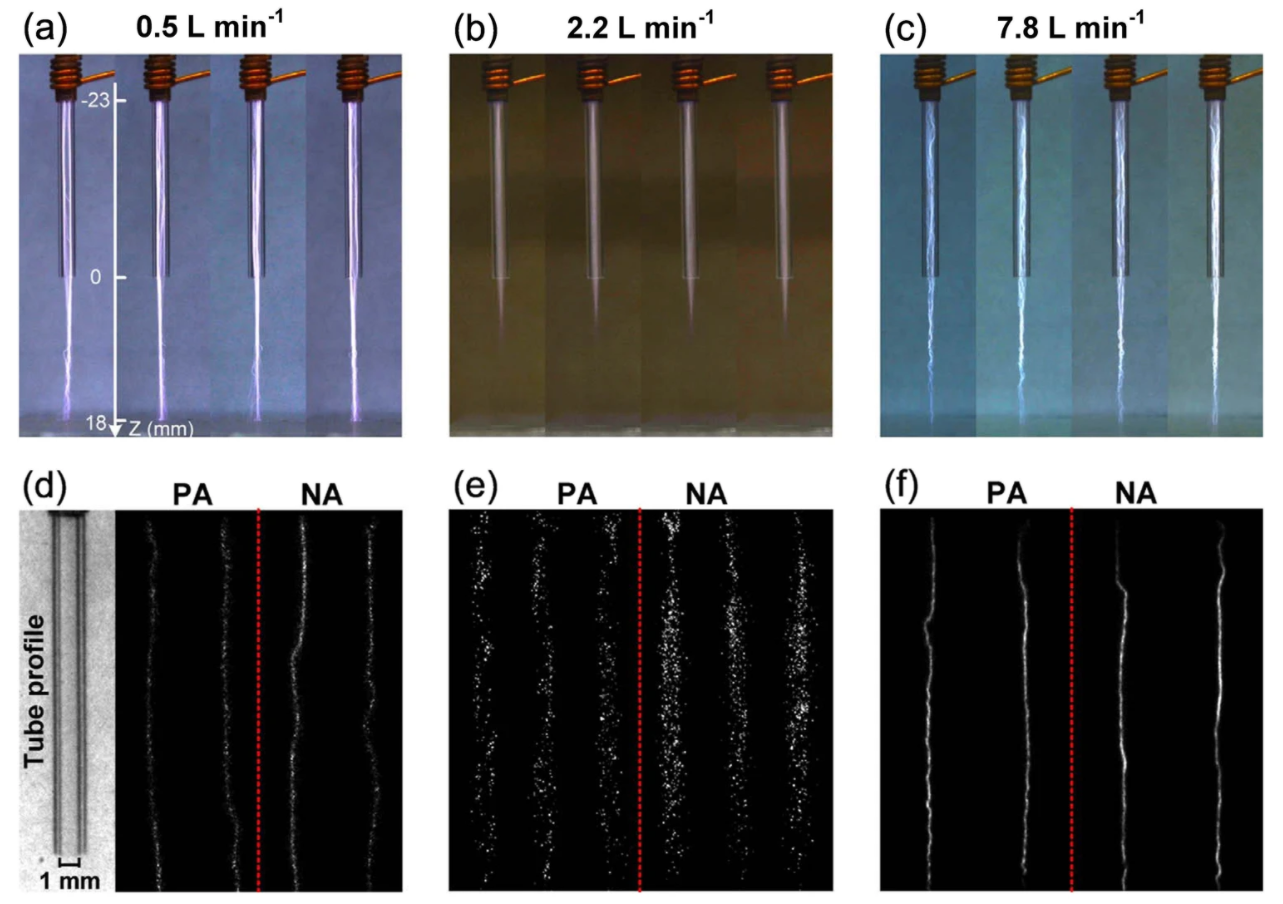
As a new-type, economic, and convenient plasma technique, atmospheric-pressure plasma jets (APPJs) have received increasing attention in various applications, such as biomedical decontamination, material processing, thin film deposition, chemical analysis, and nanoscience. Atmospheric gas discharge is very likely to constrict into filaments and diffuse plasma formation is inefficient in most cases. Developing cost-efficient diffuse APPJs represents a significant challenge for high performance in the applications mentioned above.
A research group led by Prof. TANG Jie from the Xi'an Institute of Optics and Precision Mechanics (XIOPM) of the Chinese Academy of Sciences (CAS) demonstrated an untraditional roadmap to produce a cost-efficient diffuse plasma jet at atmospheric pressure.
In their work, in contrast to the well-known streamer coupling model, an alternative train of thought was demonstrated to generate a stable and diffuse plasma by expanding and quenching the existing filamentary discharge at the initial or middle stage of the streamer development.
Based on this guideline, a promising method was proposed to produce diffuse APPJs by a combination of pseudo-streamer discharge and pulseless glow discharge in the positive and negative alternations of applied voltage, respectively.
This combination process was realized by technically controlling the gas flow in a large gap dielectric-barrier discharges (DBDs), which is equipped with a thin quartz tube in a linear field. These results were published in Communications Physics.
According to the researchers, with the gas flow velocity comparable to the ion drift one, enhancing ambipolar diffusion near the edge of the positive-streamer channel promotes the radial diffusion of newly-produced electrons, realizing the radial expansion of channel.
In addition, weakening electric field in front of the streamer head through head expansion and field offset, prevents the further development of streamer, leading to a positive-pseudo- streamer discharge.
Furthermore, reducing electric field in front of the negative-streamer head through ion compensation, impedes the initial growth of streamer, resulting in a negative pulseless glow discharge.
With these merits, this work breaks through the bottleneck of restricting the formation of diffuse plasmas in atmospheric dielectric-barrier discharge, and provides a brand-new idea for development of large uniform plasma devices that are in urgent need for various plasma applications.

Physical appearances of the plasma jet. (Image by XIOPM)

86-10-68597521 (day)
86-10-68597289 (night)

86-10-68511095 (day)
86-10-68512458 (night)

cas_en@cas.cn

52 Sanlihe Rd., Xicheng District,
Beijing, China (100864)

